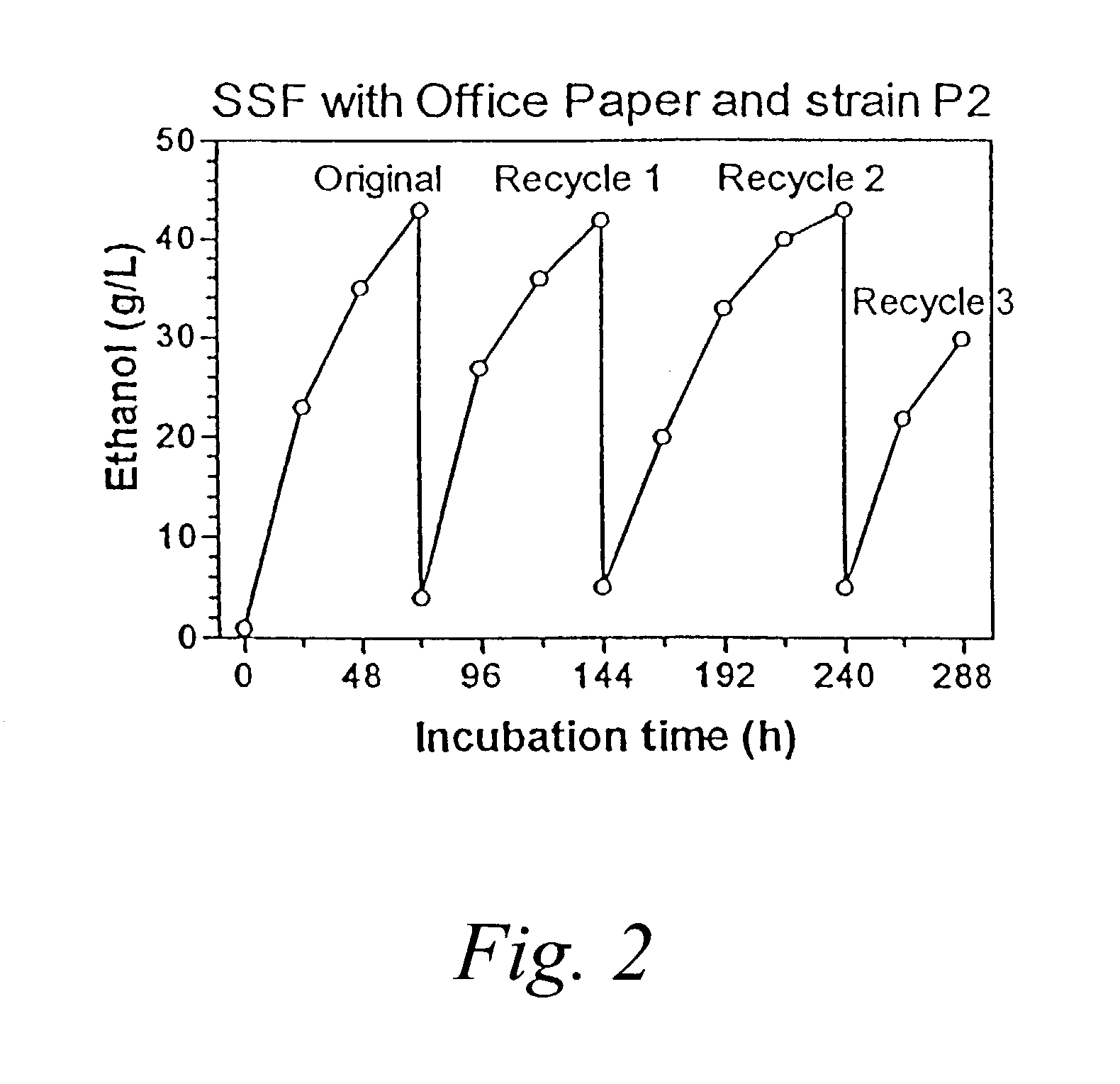Recombinant hosts suitable for simultaneous saccharification and fermentation
a technology of recombinant hosts and recombinant sugars, which is applied in the field of recombinant hosts, can solve the problems of no known natural organism can quickly and efficiently metabolize all these sugars into ethanol, cane sugar and corn starch are relatively expensive starting materials, and can be easily recycled for subsequent fermentation, so as to reduce the use of fungal enzymes, the effect of easy recycling
- Summary
- Abstract
- Description
- Claims
- Application Information
AI Technical Summary
Benefits of technology
Problems solved by technology
Method used
Image
Examples
example 1
Methods for Making Recombinant Escherichia Hosts Suitable for Fermenting Oligosaccharides into Ethanol
[0106]In this example, methods for developing and using Escherichia hosts suitable for fermenting oligosaccharides into ethanol are described. In particular, a strong promoter is identified which can be used to increase the expression of a polysaccharase (e.g., glucanase). In addition, genes from Erwinia chrysanthemi are employed to facilitate polysaccharase secretion thereby eliminating the need for cell disruption in order to release the desired polysaccharase activity.
Throughout this example, the following materials and methods are used unless otherwise stated.
Materials and Methods
Organisms and Culture Conditions
[0107]The bacterial strains and plasmids used in this example are listed in Table 1, below.
[0108]For plasmid constructions, the host cell E. coli DH5α was used. The particular gene employed encoding a polysaccharase (e.g., glucanase) was the celZ gene derived from Erwinia...
example 2
Recombinant Klebsiella Hosts Suitable for Fermenting Oligosaccharides into Ethanol
[0130]In this example, a recombinant Klebsiella host, suitable for use as a biocatalyst for depolymerizing and fermenting oligosaccharides into ethanol, is described.
Materials and Methods used in this Example
[0131]Unless otherwise stated, the following materials and methods were used in the example that follows.
Bacteria, Plasmids, and Culture Conditions
[0132]The strains and plasmids that were used in this exemplification are summarized in Table 4 below.
[0133]
TABLE 4Strains and Plasmids UsedStrains / PlasmidsPropertiesSources / ReferencesStrainsZymomonas mobilisprototrophicIngram et al. (1988) Appl.CP4Environ. Micro. 54: 397–404DH5αlacZ M15 recABethesda Research LaboratoryHB101recA lacY recAATCC37159M5A1prototrophicWood et al. (1992) Appl.Environ. Micro. 58: 2103–2110P2Pfl::pdc adhB catWood et al. (1992) Appl.Environ. Micro. 58: 2103–2110SZ1pfl::pdc adhB cat; integrated celZ; tetSee textSZ2pfl::pdc adhB cat...
PUM
| Property | Measurement | Unit |
|---|---|---|
| temperature | aaaaa | aaaaa |
| pH | aaaaa | aaaaa |
| pH | aaaaa | aaaaa |
Abstract
Description
Claims
Application Information
 Login to View More
Login to View More - R&D
- Intellectual Property
- Life Sciences
- Materials
- Tech Scout
- Unparalleled Data Quality
- Higher Quality Content
- 60% Fewer Hallucinations
Browse by: Latest US Patents, China's latest patents, Technical Efficacy Thesaurus, Application Domain, Technology Topic, Popular Technical Reports.
© 2025 PatSnap. All rights reserved.Legal|Privacy policy|Modern Slavery Act Transparency Statement|Sitemap|About US| Contact US: help@patsnap.com



